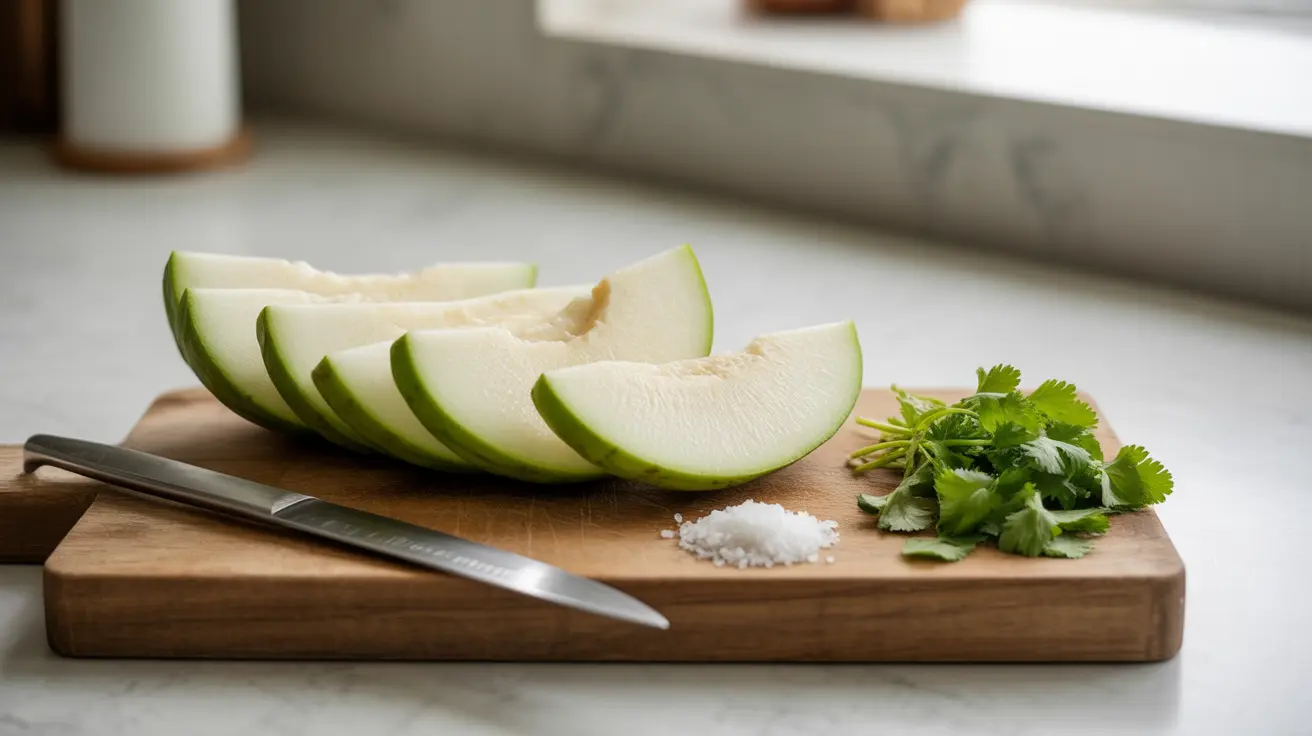Jicama, a crisp and refreshing root vegetable native to Mexico, has gained popularity worldwide for its versatile nature and impressive nutritional profile. This low-calorie, nutrient-dense vegetable offers a unique combination of dietary fiber, vitamins, and minerals that can contribute significantly to overall health and wellness.
Whether you're looking to improve your digestive health, manage blood sugar levels, or simply add more nutritious vegetables to your diet, jicama presents an excellent option. Let's explore the many health benefits and practical uses of this remarkable root vegetable.
Nutritional Profile of Jicama
Jicama stands out for its exceptional nutritional composition, making it a valuable addition to a balanced diet. This root vegetable is particularly low in calories while being rich in essential nutrients:
- Vitamin C
- Fiber (both soluble and insoluble)
- Potassium
- Iron
- Folate
- Antioxidants
What makes jicama especially unique is its high water content, making it both hydrating and satisfying while containing only about 49 calories per cup.
Digestive Health Benefits
One of jicama's most significant advantages lies in its positive impact on digestive health. The root vegetable contains a special type of fiber called inulin, which acts as a prebiotic in the gut.
This prebiotic fiber serves as food for beneficial gut bacteria, helping to:
- Promote healthy digestion
- Support regular bowel movements
- Reduce constipation
- Enhance nutrient absorption
- Maintain gut barrier function
Blood Sugar Management
For individuals concerned about blood sugar levels, jicama offers several beneficial properties. Its low glycemic index and high fiber content help regulate blood sugar levels by:
- Slowing down sugar absorption
- Providing steady energy release
- Supporting insulin sensitivity
- Reducing blood sugar spikes after meals
Heart Health Support
Regular consumption of jicama can contribute to cardiovascular health through multiple mechanisms:
- Potassium content helps regulate blood pressure
- Dietary fiber aids in reducing cholesterol levels
- Antioxidants protect against oxidative stress
- Low sodium content supports healthy blood pressure
Safe Preparation and Storage
To maximize the benefits of jicama while ensuring safety, proper preparation is essential:
- Peel the brown skin thoroughly before consumption
- Store whole, unpeeled jicama in a cool, dry place
- Once cut, refrigerate in an airtight container
- Use within 1-2 weeks of purchase
- Wash thoroughly before cutting
Creative Ways to Enjoy Jicama
Incorporate jicama into your diet through various preparation methods:
- Raw in salads or slaws
- As crunchy sticks for dipping
- Roasted or stir-fried
- Julienned in tacos or wraps
- Added to smoothies for fiber boost
Frequently Asked Questions
What are the health benefits of eating jicama regularly?
Regular jicama consumption provides numerous health benefits, including improved digestion, better blood sugar control, enhanced immune function through vitamin C, and support for heart health. Its high fiber content aids in weight management and gut health, while its antioxidants help protect cells from damage.
How does jicama help with digestion and gut health?
Jicama supports digestive health through its high prebiotic fiber content, particularly inulin. This fiber feeds beneficial gut bacteria, promotes regular bowel movements, and helps maintain a healthy gut microbiome, leading to improved digestion and nutrient absorption.
Is jicama safe and beneficial for people with diabetes or blood sugar issues?
Yes, jicama is generally safe and beneficial for people with diabetes. Its low glycemic index, high fiber content, and minimal impact on blood sugar make it an excellent choice for blood sugar management. The fiber helps slow down sugar absorption, preventing rapid blood sugar spikes.
What nutrients does jicama provide, and how does it support heart health?
Jicama provides vitamin C, potassium, fiber, and antioxidants. These nutrients support heart health by helping regulate blood pressure, reduce cholesterol levels, and protect against oxidative stress. The potassium content is particularly beneficial for maintaining healthy blood pressure levels.
How can jicama be prepared and incorporated into meals safely?
Jicama can be safely prepared by thoroughly washing and peeling the brown skin. It can be eaten raw in salads, cut into sticks for dipping, roasted, or stir-fried. Always store uncut jicama in a cool, dry place and refrigerate after cutting. Incorporate it into various dishes for added crunch and nutrition.




